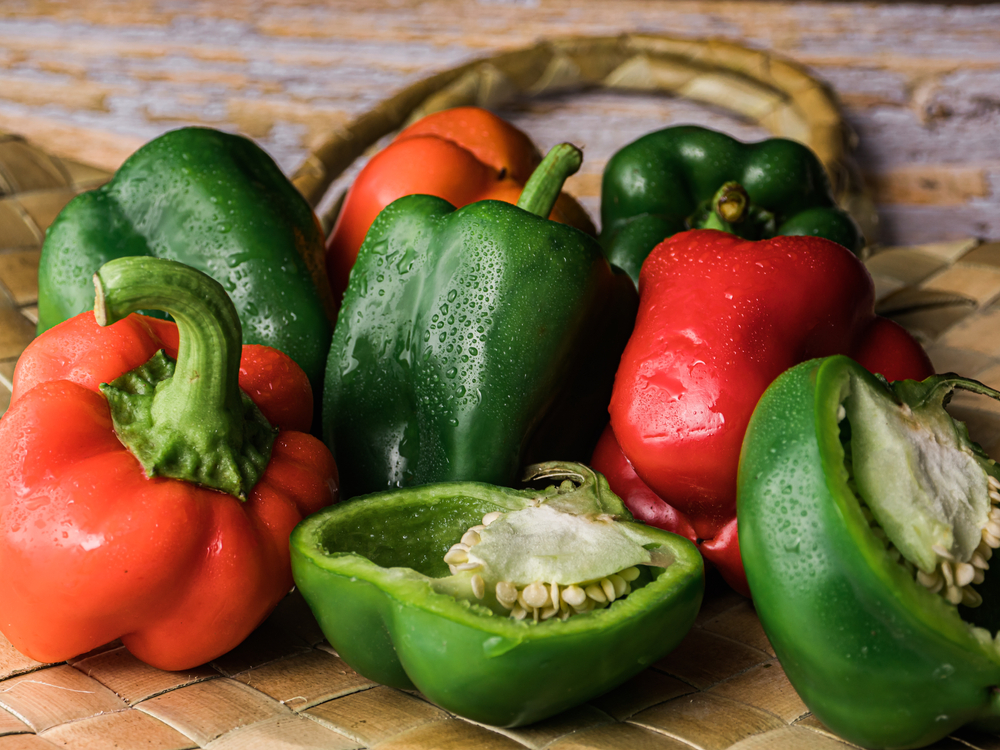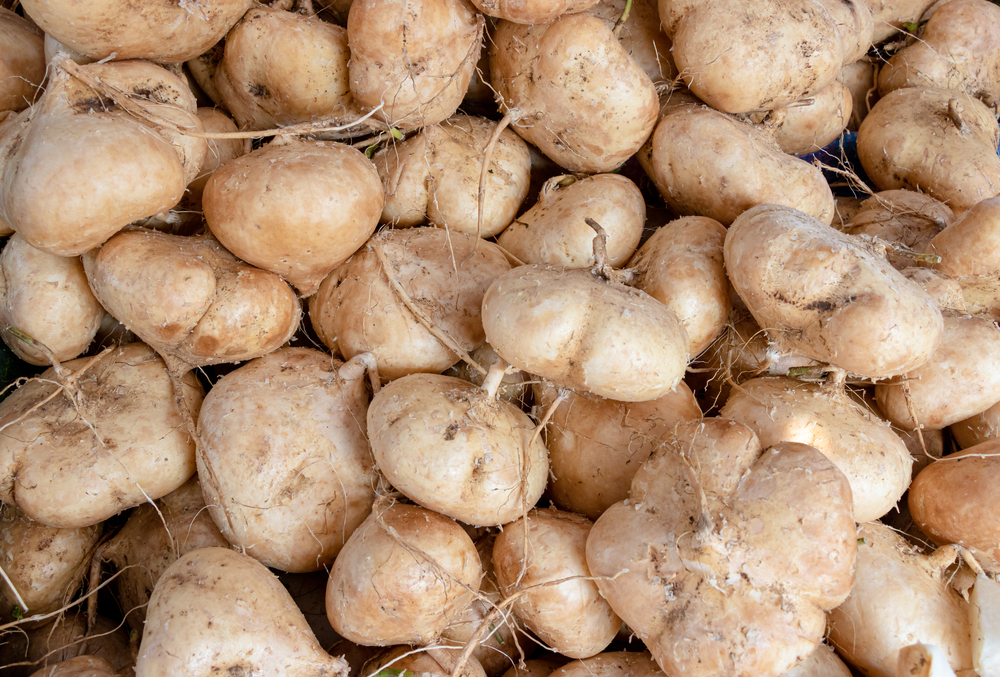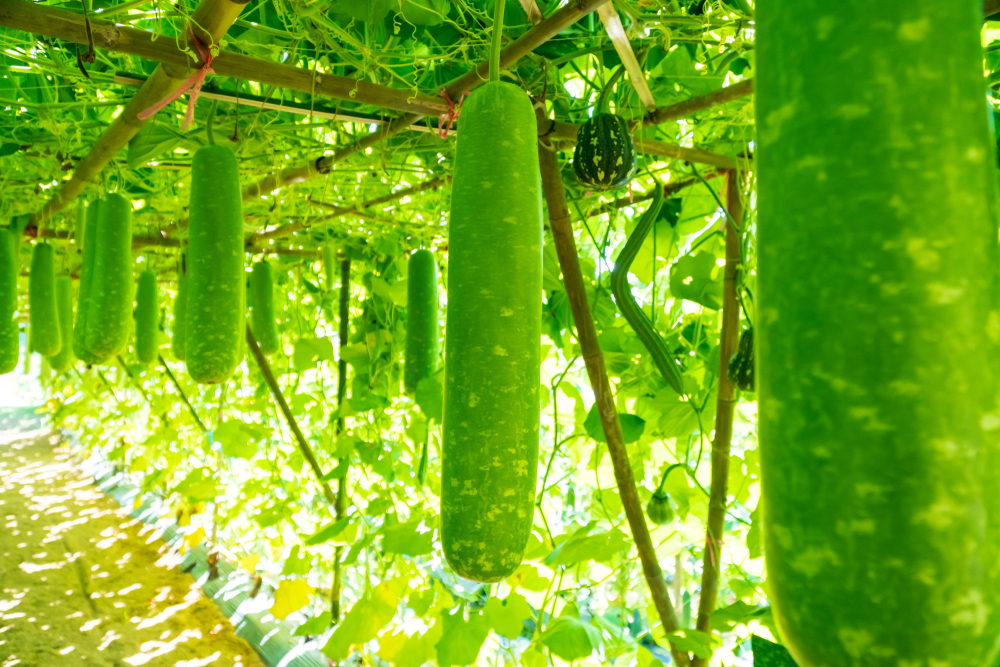In October, the Philippines has mild weather that's ideal for planting. The soil remains moist from previous rains, helping crops grow well without excessive irrigation. Here are five crops you can grow in the month of October.
Bell pepper (Capsicum annuum)
Bell pepper, also known as sweet pepper, kampana, or lara, is a crop grown for its colorful and nutritious fruits. Bell peppers come in various vibrant colors, including red, green, yellow, brown, and orange. They are a rich source of vitamins A and C, along with potassium, making them a valuable addition to any diet.

Bell peppers thrive in warm-season climates with an optimum range of 21 to 24°C for growth and quality. These peppers are adaptable to various soil types, but they prefer well-drained sandy loam soil with a pH range of 5.5 to 6.5. Sandy loam soil aids in optimal production, allowing for efficient root growth and nutrient absorption.
For areas with cool weather, the best time to plant bell peppers is from October to December. In mid and high elevations, they can be grown throughout the year. During transplanting, space the seedlings 0.3 to 0.5 meters apart between hills. When transplanting, apply 10g of complete fertilizer (16-16-16) and 250g of compost per hole. Transplant during cooler weather or in the afternoon to avoid seedling shock. To control weeds and promote growth, consider using mulch, such as rice hull, rice straw, or plastic.
Bell peppers are typically ready for harvesting 3 to 4 months after planting. Harvest when the fruits have reached their desired color and size. Gently pick the peppers to avoid damage.
Singkamas (Pachyrhizus erosus)
Singkamas, also known as jicama or Mexican yam bean, is a beloved summer favorite in the country for its crisp and refreshing taste. This versatile root vegetable is a popular ingredient in various Filipino dishes like lumpia. Its crunchy texture and subtly sweet flavor make singkamas a delightful addition to salads.

Singkamas grow in a tropical climate with warm temperatures ranging from 24°C to 32°C. It prefers a moderate amount of sunlight. The best soil for cultivating singkamas is well-draining, loose, and sandy loam with a pH level between 6 to 7. The soil should be rich in organic matter to promote optimal root development. Adequate soil preparation is essential to prevent issues like waterlogged roots and ensure the successful growth of the crop.
Choose healthy and disease-free jicama seeds or tubers from a reputable source or saved from previous harvests. Plant the seeds or tubers directly into the prepared soil, about 1 to 2 inches deep, with the eye or bud facing upward. Maintain a spacing of 8 to 12 inches between each plant to allow sufficient room for the roots to expand. Keep the soil consistently moist during the initial stages of growth.
Singkamas are usually ready for harvest within 6 to 9 months after planting. The tubers should reach a desirable size of about 2 to 4 inches in diameter. Gently dig out the tubers, being careful not to damage them. Remove any soil or debris and store the harvested singkamas in a cool, dry place.
Turmeric (Curcuma longa)
Turmeric is a perennial herbaceous plant belonging to the ginger family. It is native to South Asia and requires a warm and humid climate to thrive. This wonder spice has been used for centuries in traditional medicine and culinary practices.

Turmeric thrives in tropical and subtropical climates with temperatures between 20°C to 30°C. It requires ample sunlight and high humidity levels. Well-draining loamy soils with a pH level of 5.5 to 7.5 are best suited for its growth. The soil should be rich in organic matter to provide essential nutrients to the growing plant.
Before planting, ensure the soil is tilled and free from weeds. Add organic compost to enrich the soil with nutrients. Choose healthy and disease-free rhizomes for planting. Larger and plump rhizomes are preferable. Plant the rhizomes horizontally, about two to three inches deep in the soil, with the buds facing upward. Maintain a distance of 8 to 12 inches between each rhizome to allow proper growth.
Turmeric is ready for harvest after seven to ten months of planting. The leaves turn yellow, indicating the maturity of the rhizomes. Carefully dig out the rhizomes, and gently remove the soil. Avoid bruising or damaging the rhizomes during the harvesting process.
Sweet pea (Pisum sativum)
Sweet pea, also known as Chinese pea, snow pea, garden pea, or sitsaro, is highly valued legume for its edible pods and seeds. Fresh peas are often boiled with butter and served as a side dish. Peas are also used in pot pies, salads, and casseroles.

Sweet peas grow well in cool climates, making them ideal for regions like Benguet and Mt. Province in the Philippines. They prefer temperatures ranging from 10°C to 18°C. Humus-rich or volcanic soils provide the necessary nutrients for robust growth. For best growing conditions, the planting must be at least 1,000 meters above sea level.
Propagate sweet peas from seeds, using a recommended seeding rate of 40-50 kg/ha. Prior to sowing, pre-soak the seeds in water for 12 hours to enhance germination. Furrows should be made 50-60 cm apart. Provide trellises using bamboo and wires prevent the plants from lodging and to support the growing vines.
Harvest sweet peas at about 60-65 days after planting, before the pods reach physiological maturity. For the best quality pods, harvest them while they still have young, immature seeds.
Upo (Lagenaria siceraria)
Upo, also known as bottle gourd, is a vegetable grown for its mild flavor, high nutritional value, and culinary diversity. With its tender flesh and green-skinned appearance, upo finds its way into a variety of dishes, including stews, soups, and pickles, complementing various spices and ingredients.

Upo grows in warm climates with temperatures ranging from 25°C to 32°C. It adapts well to various soil types, but it flourishes in well-drained sandy loam soil with a pH range of 6 to 7.
For one hectare of farmland, one to two kilograms of upo seeds are required. Soak the seeds in clean water for 24 hours, and then pre-germinate them by wrapping in a moist cloth and storing them in a cool, dark place until the seed coat breaks. Plant pre-germinated seeds one per hill, with a distance of one meter between hills. Cover the seeds with a thin layer of soil.
Trellising is crucial to support upo plants and produce fruits of good quality. Construct overhead trellises using ipil-ipil or bamboo poles, with a width of two to three meters and a height of two meters. Provide ladder-like or vertical pole trellises for the vines to climb, training them to reach the overhead trellis.
Fruits develop rapidly and require careful attention during harvest. It usually takes 15 days to reach marketable size from the day of fruit set, or 60 to 80 days from sowing. Harvest fruits using a sharp knife, cutting the peduncle and leaving approximately five centimeters in length. To avoid skin bruises, place harvested fruits in a woven basket lined with banana leaves, and pack marketable fruits in plastic bags.